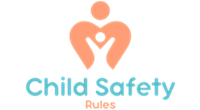Creating a safe environment for children is essential in ensuring their well-being and promoting healthy development. Safety rules play a crucial role in establishing boundaries and guidelines that can help prevent accidents and injuries. By setting and enforcing safety rules, parents, caregivers, and educators can create a secure environment where children can thrive and flourish.
One of the most important aspects of creating a safe environment for children is establishing clear and age-appropriate safety rules. These rules should be communicated in a simple and straightforward manner so that children can easily understand and follow them. It is essential to involve children in the process of setting safety rules, as this can help them feel a sense of ownership and responsibility in maintaining their own safety.
Safety rules should cover a wide range of areas, including physical safety, emotional well-being, and online safety. Physical safety rules may include guidelines for proper behavior at the playground, rules for crossing the street, and protocols for handling sharp objects or dangerous substances. Emotional safety rules may focus on promoting kindness, respect, and empathy towards others, while online safety rules may address issues such as cyberbullying, privacy settings, and appropriate internet usage.
Enforcing safety rules is just as important as setting them. Consistency is key when it comes to enforcing safety rules, as children need to know that rules are not negotiable and that consequences will be enforced if they are not followed. Parents, caregivers, and educators should be firm but fair in enforcing safety rules, making sure to provide explanations and guidance when necessary.
Creating a safe environment for children also involves modeling safe behavior. Children learn by example, so it is important for adults to demonstrate safe and responsible behavior in all aspects of their lives. By modeling safe behavior, adults can help children understand the importance of following safety rules and staying out of harm’s way.
It is also important to regularly review and update safety rules as children grow and their needs and abilities change. By revisiting safety rules on a regular basis, parents, caregivers, and educators can ensure that rules remain relevant and effective in keeping children safe.
In conclusion, safety rules play a crucial role in creating a safe environment for children. By setting clear and age-appropriate safety rules, enforcing them consistently, modeling safe behavior, and regularly reviewing and updating rules, adults can help children stay safe and thrive in their environment. By prioritizing safety and implementing effective safety rules, adults can create a secure and nurturing environment where children can grow and develop to their full potential.









